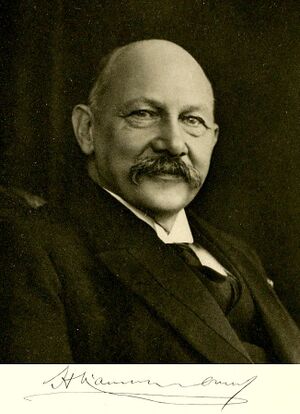Heike Kamerlingh Onnes (nonfiction)
Heike Kamerlingh Onnes (Dutch: [ˈɔnəs]; 21 September 1853 – 21 February 1926) was a Dutch physicist and Nobel laureate.
He exploited the Hampson-Linde cycle to investigate how materials behave when cooled to nearly absolute zero and later to liquefy helium for the first time.
His production of extreme cryogenic temperatures led to his discovery of superconductivity in 1911: for certain materials, electrical resistance abruptly vanishes at very low temperatures.
On 8 April 1911, Kamerlingh Onnes found that at 4.2 K the resistance in a solid mercury wire immersed in liquid helium suddenly vanished. He immediately realized the significance of the discovery (as became clear when his notebook was deciphered a century later). He reported that "Mercury has passed into a new state, which on account of its extraordinary electrical properties may be called the superconductive state". He published more articles about the phenomenon, initially referring to it as "supraconductivity" and, only later adopting the term "superconductivity".
Kamerlingh Onnes received widespread recognition for his work, including the 1913 Nobel Prize in Physics for (in the words of the committee) "his investigations on the properties of matter at low temperatures which led, inter alia, to the production of liquid helium".
In the News
Fiction cross-reference
Nonfiction cross-reference
External links:
- Heike Kamerlingh Onnes @ Wikipedia
Attribution:
